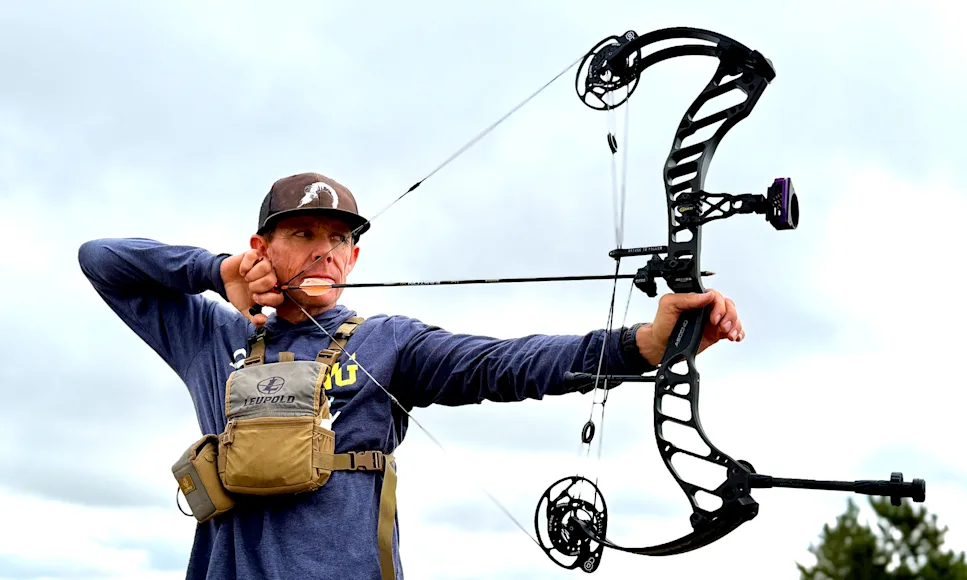Flagship bows are as good as it gets. They feature the latest technologies and are engineered to optimize accuracy and speed while providing a comfortable and often customizable shooting experience. The problem with today's flagships, though, is the price tags they wear. You won't find a new flagship bow for under $1,350, and most are near or above the $2K mark.
The just-released Bowtech Ascend is meant to be an answer to the budget-busting flagship-bow price-tag problem. A mid-year launch, the 31-inch axle-to-axle Ascend sports many of the same technologies as the company's top models, but it comes in at under $1,000, including an accessory package. Bowtech claims that the Ascend also delivers flagship performance. So, I put it to the test to find out.
Related: Bowtech Proven 34 Compound Bow Review
Bowtech Ascend Specs and Overview
Specs
Axle-to-Axle Length: 31 inches
Brace Height: 6.5 inches
Draw Weights: 45-60, 55-70 pounds
Draw Lengths: 24.5-30 inches
IBO Speed: 340 fps
Weight: 4 pounds, 2 ounces
Price: $999, with DLK Package
The Bowtech Ascend is a fairly short, reasonably light, compact bow with plenty of adjustability, including 5.5 inches of draw-length range and 15 instead of the typical 10 pounds of draw-weight adjustability per model. These types of specs are normally associated with compound bows that fall into the budget and beginner categories, as bow efficiency is typically compromised with so much adjustability. And yet, as we'll see in a bit, the Ascend is no slouch when it comes to arrow speed.
As for flagship-bow technologies, the Ascend sports several. Most notable is the cam system. I love a compound bow that I can tune without twisting yokes and pulling axle pins to swap shims. Bowtech's DeadLock Lite Cam System is a dual-locking, micro-tune system that lets you adjust the position of the cams with an Allen wrench. No bow press is needed. Two other flagship features of the Ascend, and two that have become non-negotiable for me in recent years, are an IMS rest-attachment system and a Pic-Mount sight-attachment system.
The IMS system allows for direct-to-riser rest mounting. Dovetail slits cut into the back of the riser accept IMS-style fall-away rests that feature a clamp-style mount that sinks into the dovetail grooves. This reduces the need for a rest-mounting bar and screw, and the dual-locking clamp eliminates the risk of rest movement. The Pic-Mount system is a three-tier Picatinny mount cut into the aluminum riser, which allows you to mount the sight directly to the riser's face. No sight bracket with screws or extended dovetail bar is necessary. Like the IMS system, the Pic-Mount system reduces weight; it also makes lockdown absolute and puts the sight in direct line with the riser for improved bow balance.
Another accessory-mounting win is the Ascend's Dual Stabilizer Mounting Holes. A standard mount and a lower mount let shooters tinker and customize to create a feel and balance that increases their overall accuracy. The Fixed Roller Guard Cable System is also something you expect on higher-end bows. One of the most significant drawbacks of most budget bows is the plastic rod system used to guide the cables. The cables will wear away the plastic and the rod creates friction that reduces cable life. Bowtech's Fixed Roller Guard Cable System uses a pair of aluminum grooved wheels to ensure a friction-free draw that locks the cables in their optimal path, thereby reducing cam torque and extending cable life.
Related: Mathews Lift X Compound Bow Review
Bowtech Ascend Test Results
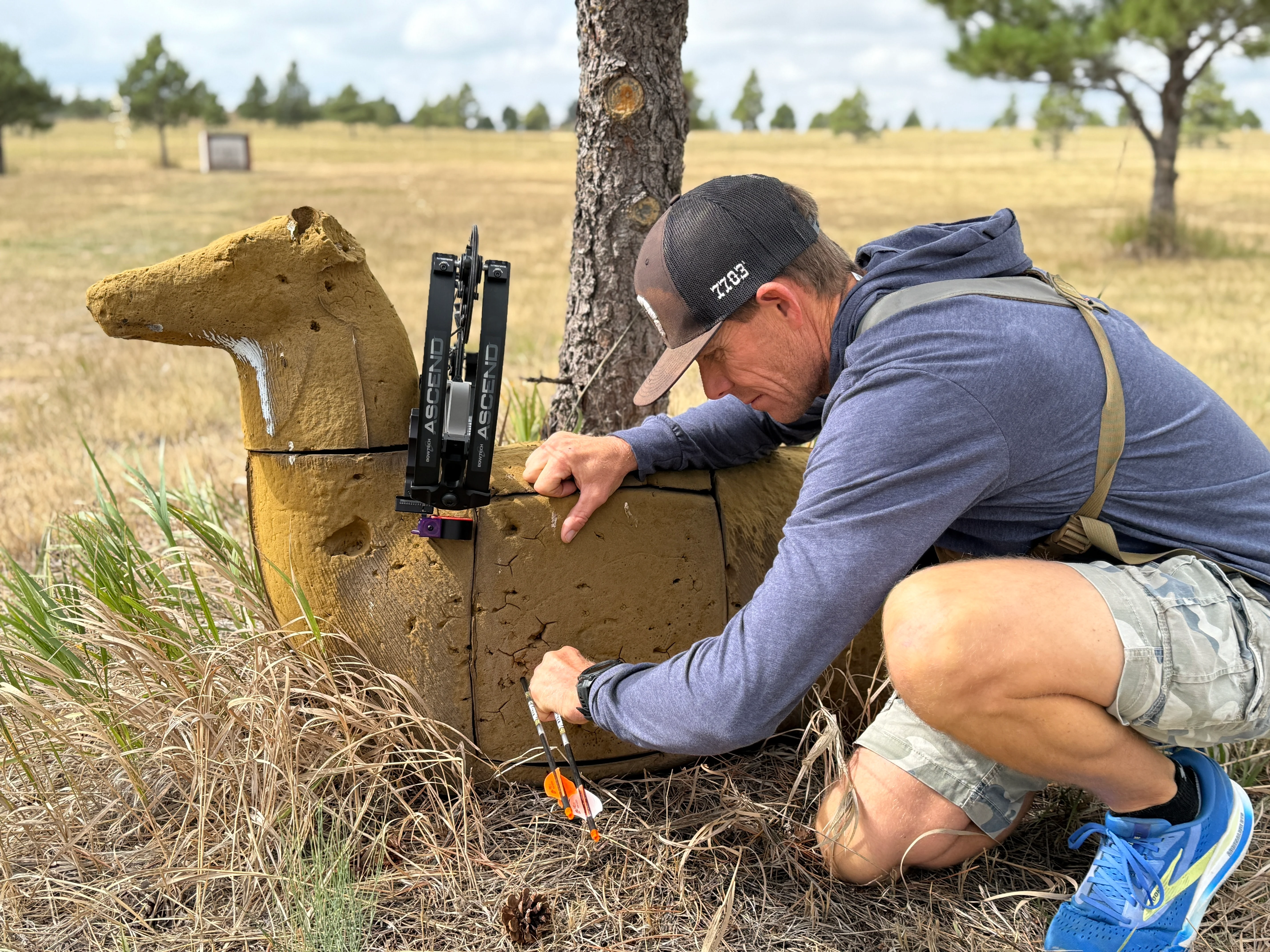
It's important to note here that this was a preliminary test—a first look in order to get you quick feedback on a brand-new bow. I tested the bow out to 60 yards and put exactly 96 arrows through it. So, before we get into the weeds about how the bow shoots and whether I'll put my "flagship" stamp of approval on it, know that I will likely update this piece later after I've had more time to test it to longer ranges with variety of arrows, broadheads, and in different environmental conditions. That said, here's how my quick test went, from the initial setup to the final tune.
Bow Build
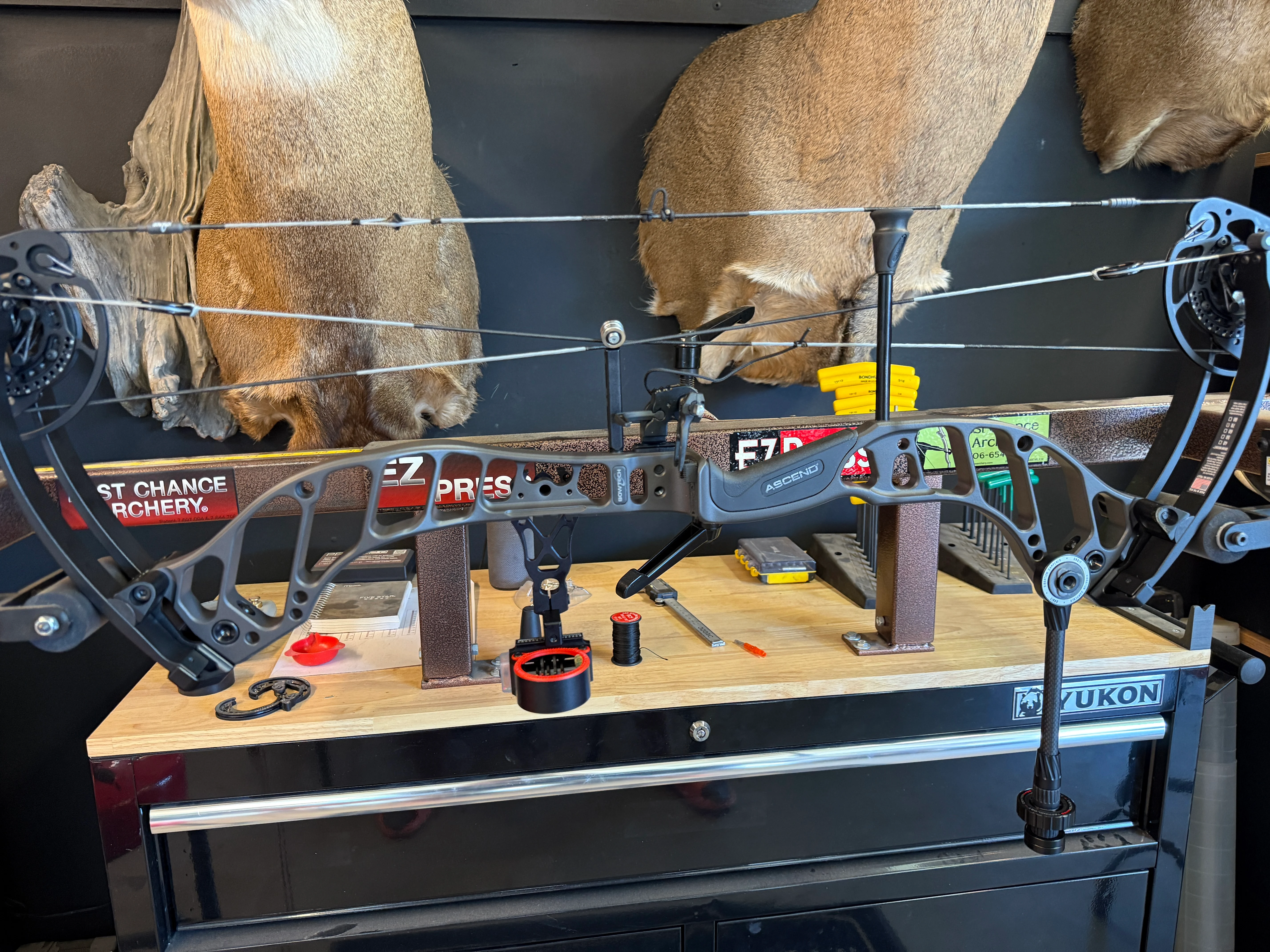
Using Bowtech's DLX Kit, which includes a fixed-pin Black Gold Rush sight, Ripcord RAK rest, TightSpot quiver, and 6-inch stabilizer, I had the bow set up in under 30 minutes. Accessory attachment is straightforward. I set the bow to a draw length of 29 inches, and with the limb bolts maxed out, the draw weight measured 70.04 pounds on my digital draw scale.
I set the bow's timing via a draw board, then I did some old-school eyeballing with the sight and sent a single arrow into a Block target from 20 yards. I was impressed. The 6.5-inch brace height puts much of the bow's draw weight in the first few inches of the draw cycle. Still, the front-end of the cycle isn't overly stiff, and beyond the first few inches, weight builds evenly. The draw cycle is smooth, and the transition to the bow's 80 percent letoff (in Comfort setting) is silk. The DeadLock Lite Cams roll over in unison, and the dual cable stops contact the bow's down cable to create a firm but not-too-firm back wall.
At full draw, the 31-inch axle-to-axle Ascent feels balanced, and the DeadLock Lite Cams aren't itching to pull the shooter into the shot. I could easily get into my two-part anchor and let my pin float while I pushed into the aluminum riser while driving my release elbow backward.
At the shot, the Ascend is remarkably quiet and nearly dead in hand. The Orbit Dampener mounted low on the riser does its job, and the bow's build drowns out noise and vibration. All in all, the Ascend provides a quiet, comfortable, top-end shooting experience.
Before taking the Ascend back to the shop for a final paper tune, I sighted it in to 60 yards. I will classify the DLX kit as budget; it's a far cry from a flagship accessory kit. Still, the rest, sight, and stabilizer did their job. I discovered I prefer the lower stabilizer mount, and my first 60-yard arrow group measured less than 3 inches. I can live with that.
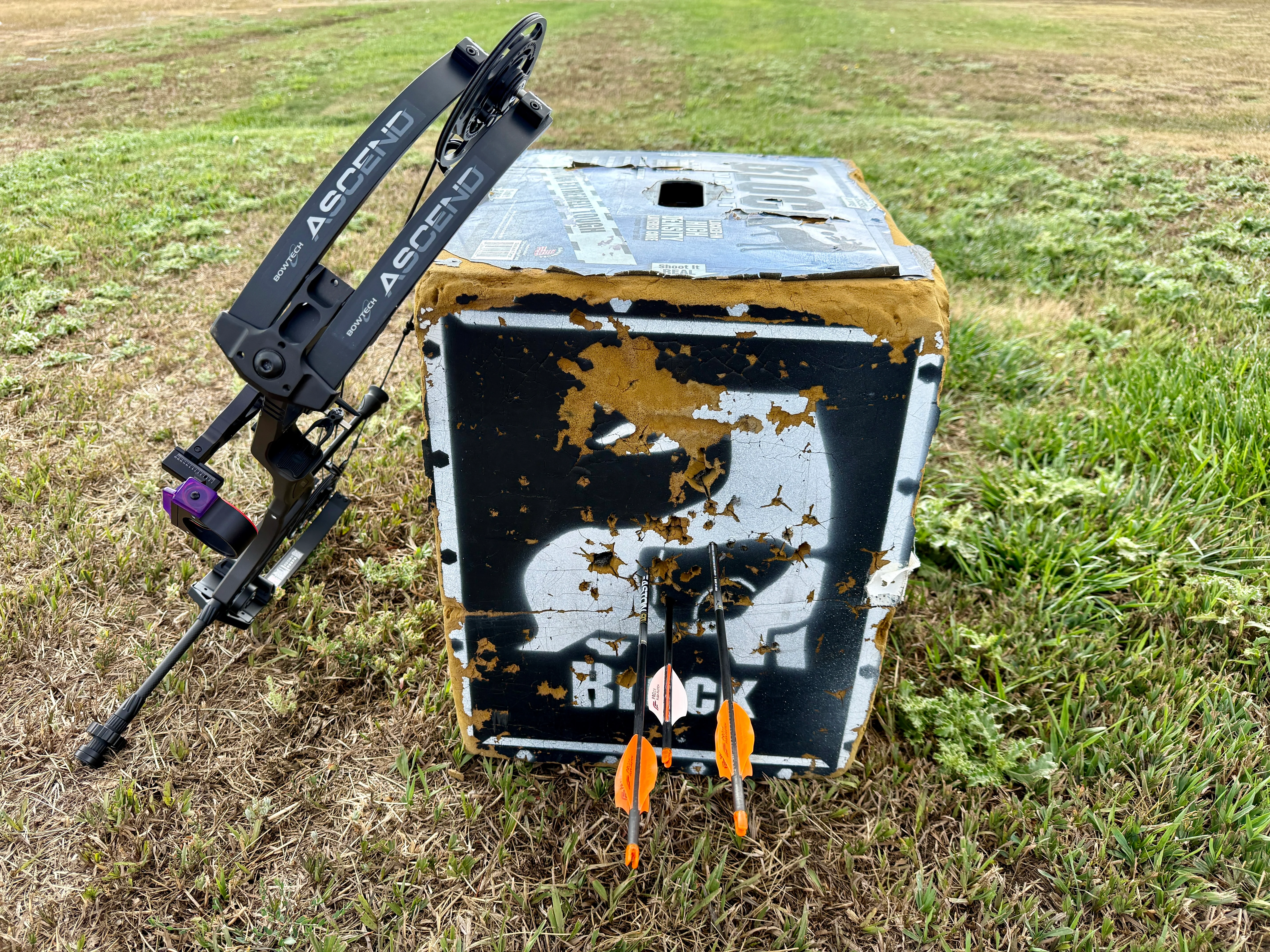
Final Tune
I knew my arrows were flying well, but I had no idea how well. My first six shots through paper with six different 5.0 arrows produced a slight nock-left tear. That's the kind of consistency you hope for. Using a 7/64 Allen wrench, I adjusted and locked the DeadLite System, and my next six shots through paper produced perfect tears. I'm a fan of how Bowtech's DeadLock System makes tuning so uncomplicated.
Speed & Noise
Concerning speed, the 6.5-inch brace height Ascend produces the type of speed one would expect from a flagship bow. Bowtech list a IBO speed 340-fps speed rating in the Performance setting. I shot my Ascent in the Comfort setting, using 381.5-grain Easton 5.0 arrows and a 29-inch draw length—and I got a three-shot fps average of 303. That's plenty fast for me. If I were a speed freak, I would flip the module from Comfort to Performance and gain several feet per second. But I don't put a premium on speed. I want a comfortable shooting experience from the draw to the release. A comfortable experience leads to shooting confidence, which leads to increased accuracy.
I was impressed with how consistent the speed measurements where through my chronograph. My first shot measured 303, my second shot 304, and my third shot 303. The bow is dead quiet. It produced a three-shot dB rating of 68.5, which proved quieter than the company's flagship Revolt 34, which we tested for our 2025 Best Compound Bow review.
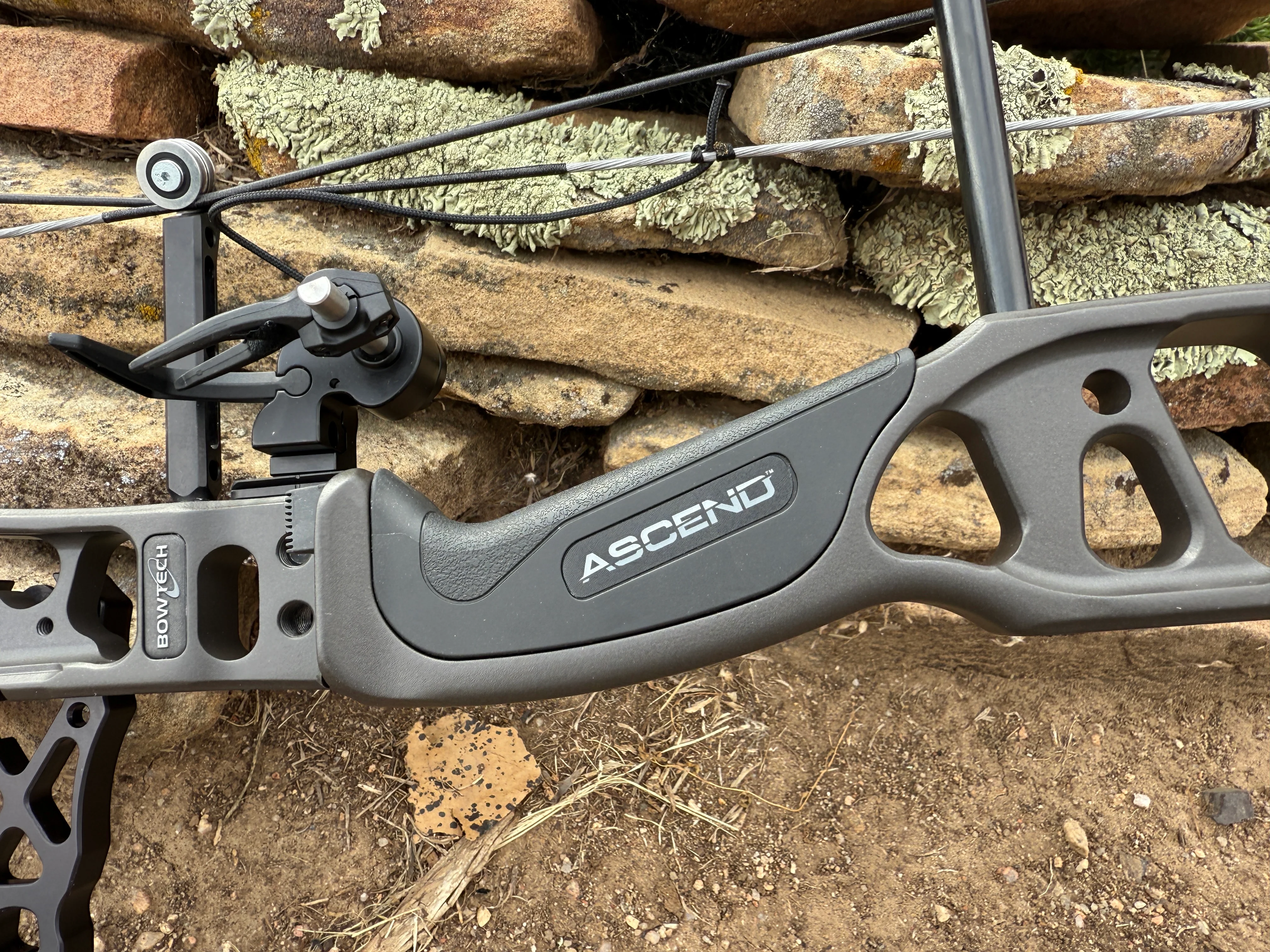
I did not love the Ascend's grip. I prefer a thin, angled, and flat-backed grip, and the soft-touch-finish molded grip on the Ascend feels thick and creates more contact with the palm swell area of the hand than I like. Too much grip means induced torque. This is the only part of the bow where I feel Bowtech missed the flagship call. Grips like this are typically found on budget/beginner bows.
Final Thoughts on the New Bowtech Ascend Compound Bow
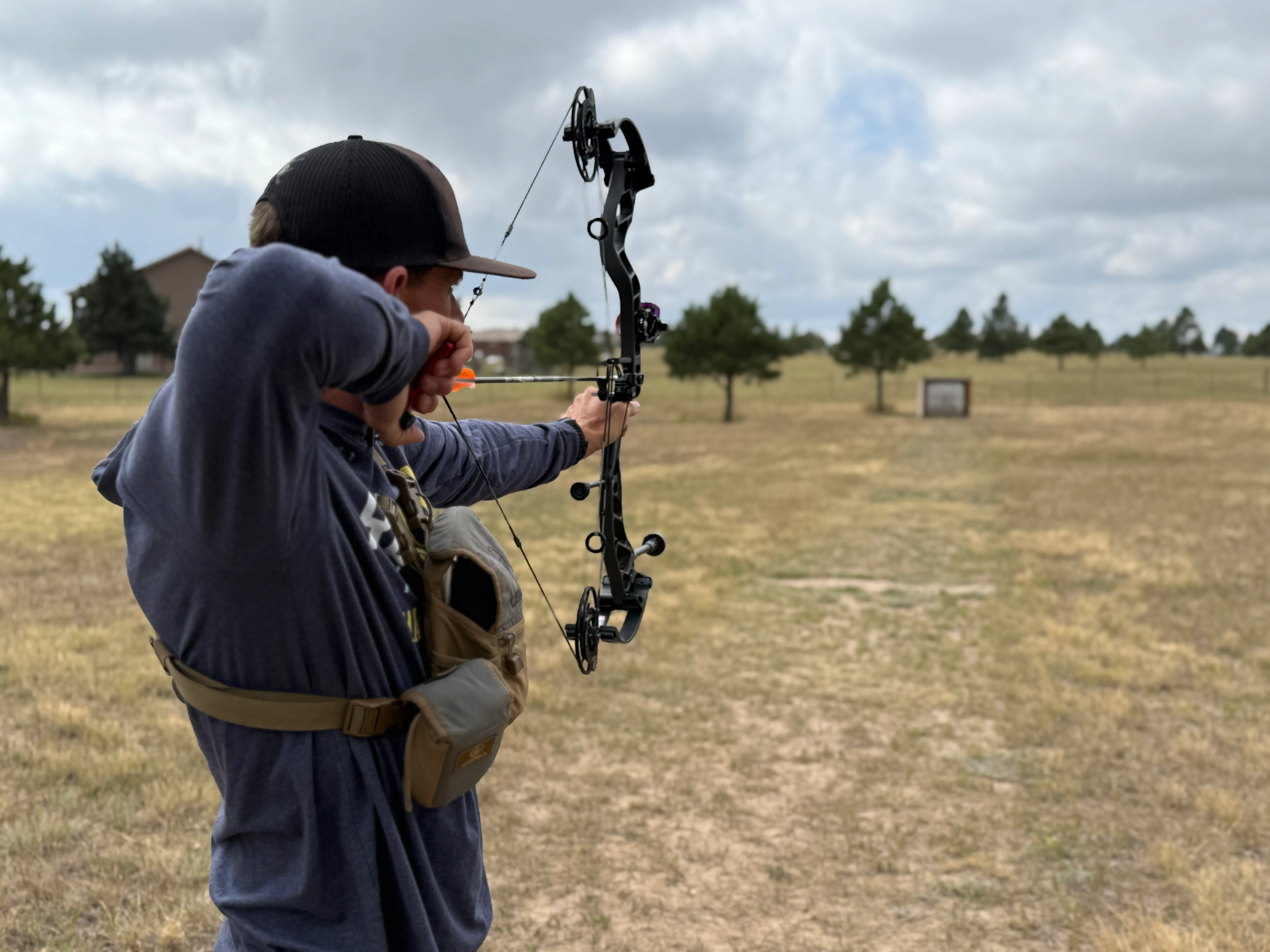
Pros
Accurate
Smooth draw cycle
Extremely quiet and dead in the hand
Easy to tune
Cons
Thick grip
The DLX accessory packege is a budget accessory package
While I like that Bowtech offers the DLX Kit with this bow, making it even more affordable, neither the rest nor the sight offers in-line riser mounting capability. That said, you can buy the bare bow and get your own premium accessories.
As for whether this sub-$1K bow offers flagship performance, my answer is: It does. This bow is a far cry from a budget bow and boasts multiple, purposeful top-end features. Bottom line: It's a great value and welcome addition the 2025 crop of new compound bows.
Read Next: The Best Compound Bows of 2025, Tested and Reviewed

